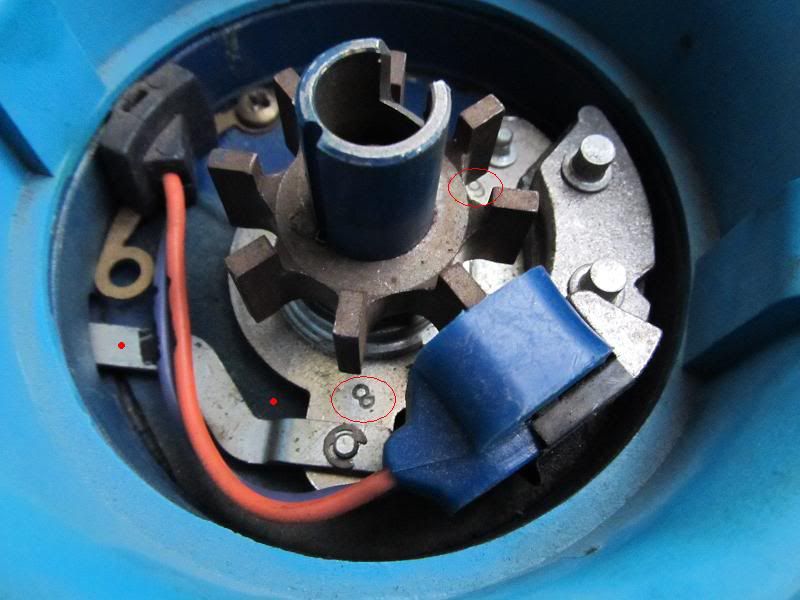
11-18-2010, 06:01 PM
|
 |
CC Member

|
|
|
Join Date: Feb 2008
Location: Tucson,
AZ
Cobra Make, Engine: CCX-3-3624, 351w, 5-speed
Posts: 344
|
|

 Not Ranked
Not Ranked
 Limit total advance???
Limit total advance???
I've spent the last couple of weeks trying to tweak the timing on my car to get optimal performance. Could never find the "sweet spot" where I was getting great power in every situation. Finally got under the car and put a tape on the balancer with marks at BTDC 0, 10, 20, 30, 40 degrees. Seems I am getting best idle and low end performance at around 18-20 BTDC initial, but the total advance shoots up past 45 degrees at higher RPM's, 2500 or so and I start to get pinging. If I retard the timing down so my total advance is say 35 to 38, the low end suffers. The other night I cranked in the allen screw in the vacuum advance all the way, and it brings the total advance down to a more reasonable 40 degrees BTDC at 2500 RPM's. My question is there any way to limit the total mechanical/vacuum advance on Ford distributors? I think I could put a screw or a pin in the advance arm or the base of the distributor to mechanically stop the advance from moving, but is there a better way? FWIW, the vacuum on the engine off the manifold at idle is 17" Hg and it goes up to 20" Hg at 2500 RPM's, the ported vacuum off the side of the carb where the vacuum advance is hooked up is 0" Hg at idle and goes up to 23" Hg at 2500 RPM's.

__________________
"Freedom is only an illusion when the government has all the guns."
|


